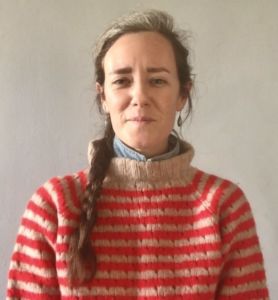Children in the classroom learn in a variety of different ways. However, catering to each child’s preferred or necessary learning style can be not only difficult, but sometimes impossible in a classroom of over 20 students.
That’s where High Road School of Peoria comes in. The organization teams up with local school districts, such as East Peoria #86, Pekin #108, Dunlap #323, Limestone #310, and several others to provide custom designed education plans for students who may benefit from them.
The goal is to create a nurturing and stimulating environment that allows for learning and staff and student relationships to flourish. Increased academic success and positive socialization skills are a few outcomes High Road School of Peoria hopes to achieve through their specialized work.
What makes the organization unique is its ability to cater to each student’s unique, individual needs through multisensory programs. Counseling, speech language therapy, physical therapy, and music therapy are just a few methods used by the school to promote social emotional and academic progress.
Lindsay Rossmiller is head of Creative Arts Therapies for the Illinois region of High Road Schools. She has also been a music therapist for 12 years, and has her own caseload of students within school districts located in the Chicagoland area. Rossmiller says a variety of students can benefit from the services High Road offers.
 “We are uniquely equipped to meet the needs of neuro diverse, unique learners, so kids who need support in the transitions, kids who need credit acquisition, kids who … need a specific kind of classroom, and a specific kind of schedule,” said Rossmiller.
“We are uniquely equipped to meet the needs of neuro diverse, unique learners, so kids who need support in the transitions, kids who need credit acquisition, kids who … need a specific kind of classroom, and a specific kind of schedule,” said Rossmiller.
This support can be one on one, or it can include a group setting that enacts many individualized learning plans at once. In her own practice, Rossmiller says music therapy breaks down many barriers that children may be facing.
“I think now more than ever, it really is important to live in the structure of music … music is organizing, it is grounding…but also music can be really flexible and spacious, and can become a spot where kids can hear themselves in a way that is meaningful to them. What is successful in music therapy is being your own musical self, and doing that with as much groundedness as possible,” Rossmiller said.
The pillars of music therapy
Within music therapy, there is no correct way to sound or move. Much of it is improvisational, or it could be as simple as a certain tune that a child needs to hear at that moment. Overall, listening, composing, recreating songs, and improvising are the four basic pillars that influence what happens during a music therapy session.
What’s most important is that the sessions are child-led, and that the therapist is skilled in the fine tuned fundamentals to music, and flexible to what a child needs in that moment.
“If you were to witness an improvisation with myself and a child, you might not know who is initiating the chance first because we are…working so quickly and closely together…it really is essential to be able to listen,” said Rossmiller.
With this week kicking off national Autism Awareness Month, Rossmiller says music therapy can be very effective for children on the spectrum.
“Our world is not very good at creating a space where neuro diverse students are honored, and considered, or understood, so I think that’s an important thing to state. What happens in music therapy that’s unique is that music opens up a space where it’s not essential for you to make eye contact with me, it’s not essential for you to sit still, or to listen in a particular way or sound a particular way…so however you need to move to regulate and to feel ready to engage and learn and be in relationship is fine, and the music can adjust to fit that,” said Rossmiller.
Regardless of what barrier a student may be facing, the work done in music therapy manifests in the classroom, and in the child’s personal life in important and sometimes intimate ways.
“I’m thinking of so many students who have over time been able to say I love my songs they understand me, well before they might be able to say I love myself I’m understanding myself…but to be able to speak about a song, or an instrument as an ally, as a resource, and to know when to use it and why I want to use it…that is one way that I notice kids evolving and growing,” Rossmiller said.
She says other ways she notices kids growing is through an expanded range of voice, using more of the piano or other instruments symbolizing their world is becoming bigger, and an overall sense of letting their guard down to welcome more flexibility and opportunities into their lives.
And while the goal of these therapy programs may reside under social emotional learning skills and increased academic performance in the classroom, Rossmiller says there’s a bigger lesson to be learned.
“The hope is that…a student will be at home in their sound, in their body. They will reach the greatest point of integration that they can. During the school day…that they will engage in that 30 minutes or 45 minutes of music therapy and then be ready to transition back to class and learn, and ultimately that kids will become equipped with the understanding that no one can take your music. Your music is yours,” explains Rossmiller.
This understanding and sense of self is crucial in developing not only better students and musicians, but more empathetic community members as well.
The High Road School of Peoria is located at 325 W. Romeo B Garrett Avenue. More information on their services and education plans can be found on its website.
